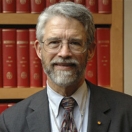
In 1939, the Futurama exhibit at the New York World’s Fair captured America’s imagination by predicting a future of self-driving cars, navigating America’s highways and winding roads unaided by human intervention. Now, 76 years later, advanced technology has allowed American innovators to start testing cars that bring this vision to life.
Today, the Department of Transportation (DOT) is moving one step closer to a future in which self-driving -- or autonomous -- vehicles transform how we move while improving the safety of our streets. Transportation Secretary Anthony Foxx is announcing a Smart City Challenge that will award up to $40 million to one American city to serve as an example of what is possible in transportation by using data, technology, and innovation to shape how people and goods move in an urban environment.
This Smart City Challenge will keep America at the forefront of transportation innovation. Cities across the country, in collaboration with the private sector and universities, will compete to win this funding based on the strength of their data-driven visions for the deployment of innovative technologies in their communities. This includes connected vehicles that can talk to each other or the surrounding infrastructure, smart sensors, and self-driving cars, as well as the partnerships cities can mobilize to pilot these technologies at scale. Today, DOT is also announcing a public-private collaboration with Vulcan, Inc., which intends to award up to an additional $10 million to the winning city to support innovative programs designed to meet the significant transportation challenges of the future.
In October of this year, President Obama released the latest update of his Strategy for American Innovation, which highlighted the advances in computing, sensors, and machine learning that, in the hands of America’s innovators, have made autonomous vehicles possible. President Obama also proposed doubling federal investment to help bring these technologies to commercial deployment, given that autonomous vehicles, coupled with soon-to-be-ubiquitous vehicle-to-vehicle communication could save thousands of lives annually, give new independence to those like the elderly or the blind who until now have been unable to drive, and help reduce greenhouse gas emissions. And for the average American who spends 50 minutes a day commuting to and from work, autonomous and connected vehicles could free up hundreds of hours a year for other pursuits.
The types of advanced vehicles under development will interact with “smart cities” that use state-of-the-art sensors to monitor and adapt to traffic flows in real time, accelerating the flow of people throughout the city. Today’s announcement follows recent rounds of investment by DOT in Connected Vehicle Pilots in multiple American cities, which were announced in September of this year alongside the White House Smart Cities Initiative to help communities use advanced technologies to tackle pressing local challenges such as traffic congestion.
Throughout the history of autonomous and connected vehicles, federal investments have helped catalyze private-sector advances. At the turn of the millennium, the Defense Advanced Research Projects Agency (DARPA) Grand Challenges brought together researchers, university students, and the private sector in a race to build driverless cars capable of navigating long distances over difficult terrain. These challenges set off a wave of academic and private-sector innovation. As technology in cities grows smarter, and autonomous and connected vehicles mature, continued federal investment and leadership -- such as today’s announcement by DOT-- will accelerate this transformation and increase its positive impacts.
But the federal government cannot do this alone. Bringing to life a city-scale pilot of autonomous and connected vehicles will require the leadership of city leaders, innovators, researchers, and citizen pioneers across the country, working together to develop and put forward ideas for realizing a future of advanced vehicles. Cities will need to partner with the private sector, state and federal governments, and researchers to build this vision. Autonomous and connected vehicles have the potential to transform lives and the global economy, and we need an all-hands effort to ensure that the United States remains at the leading edge of developing and testing this technology.



